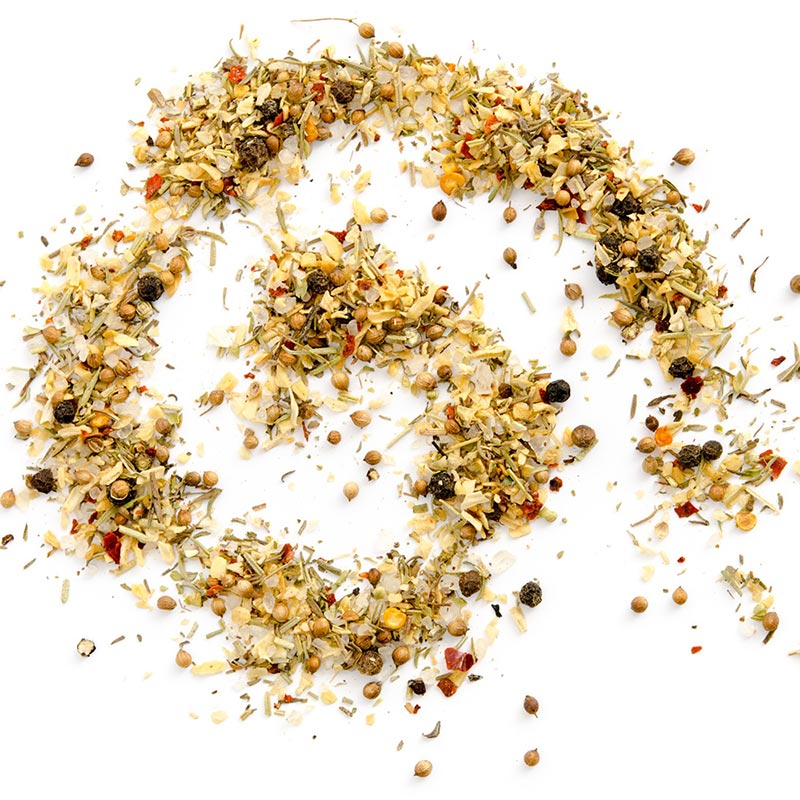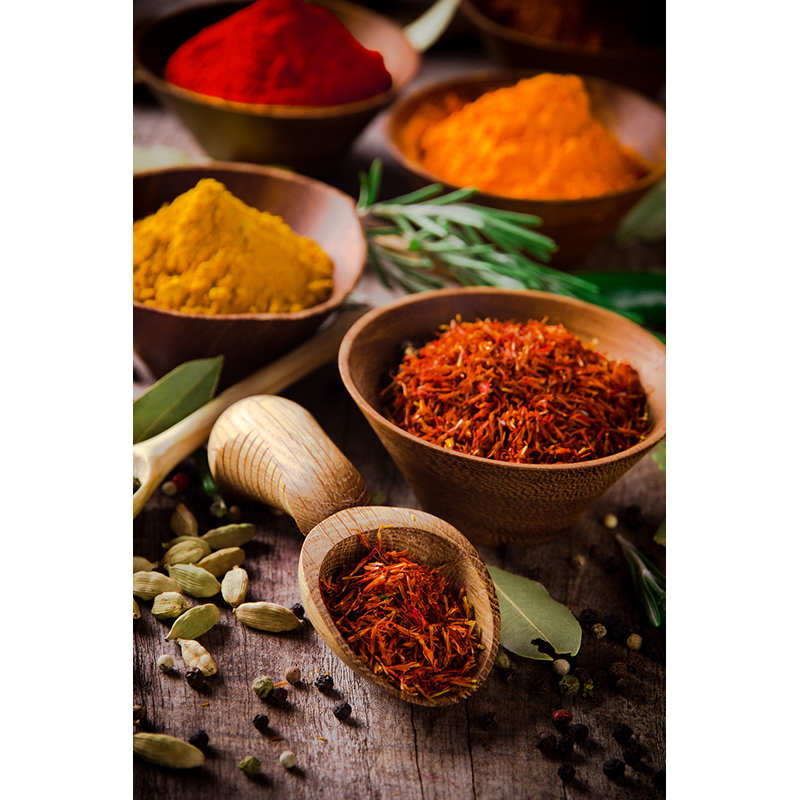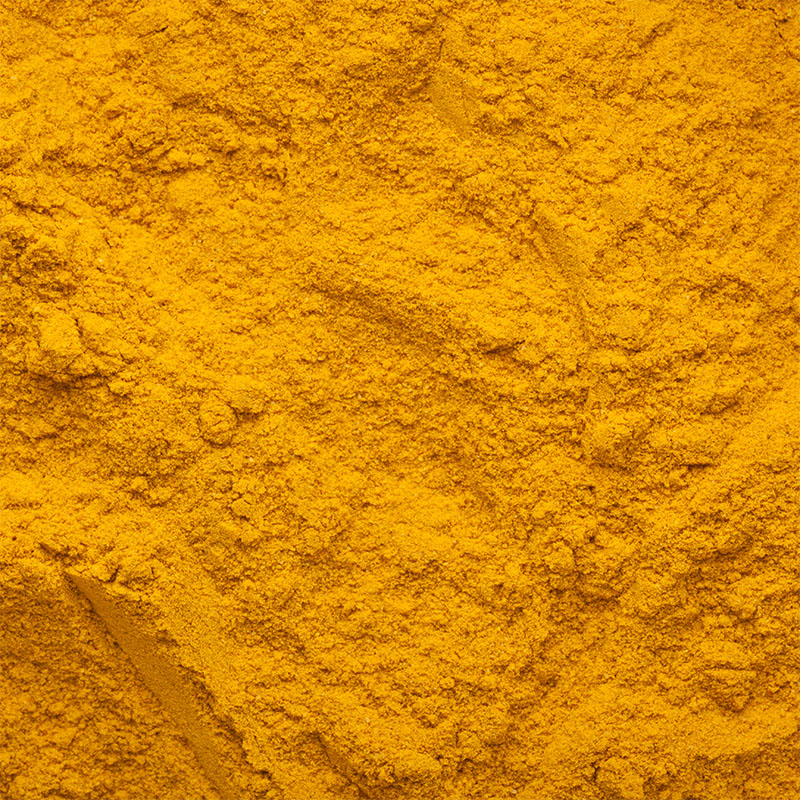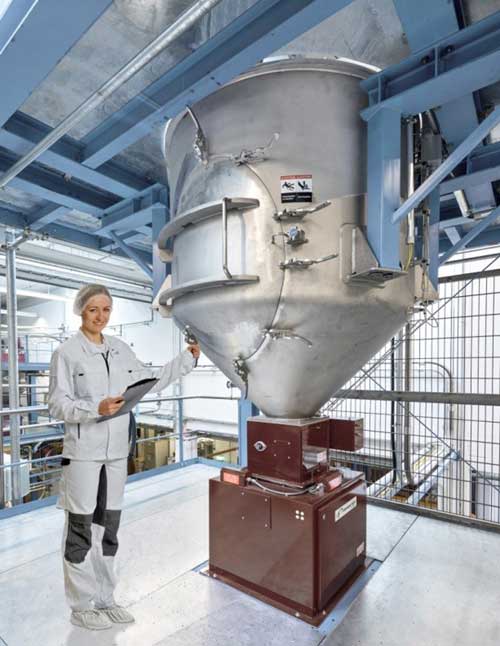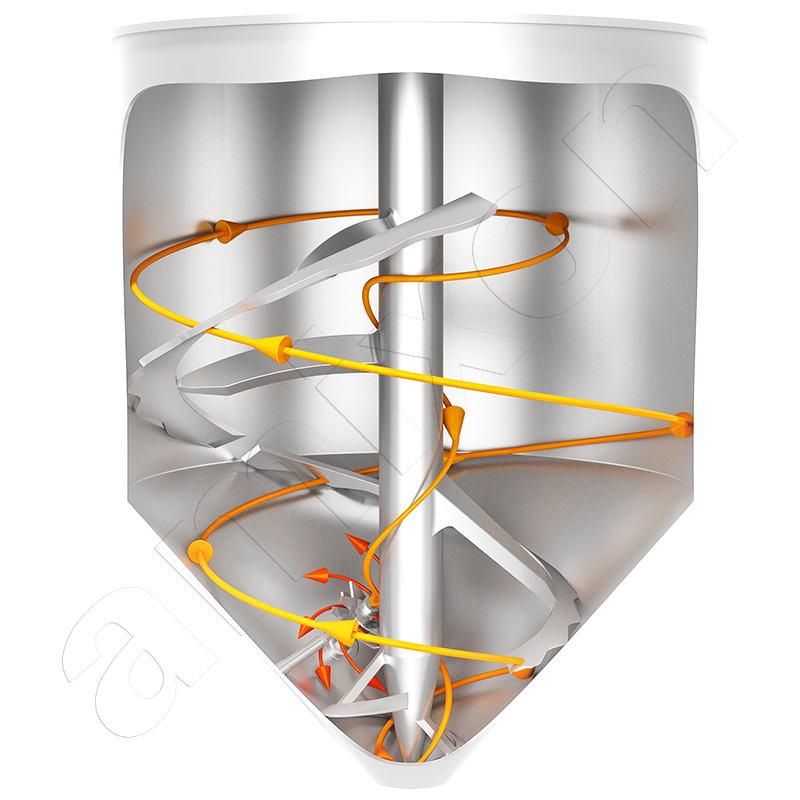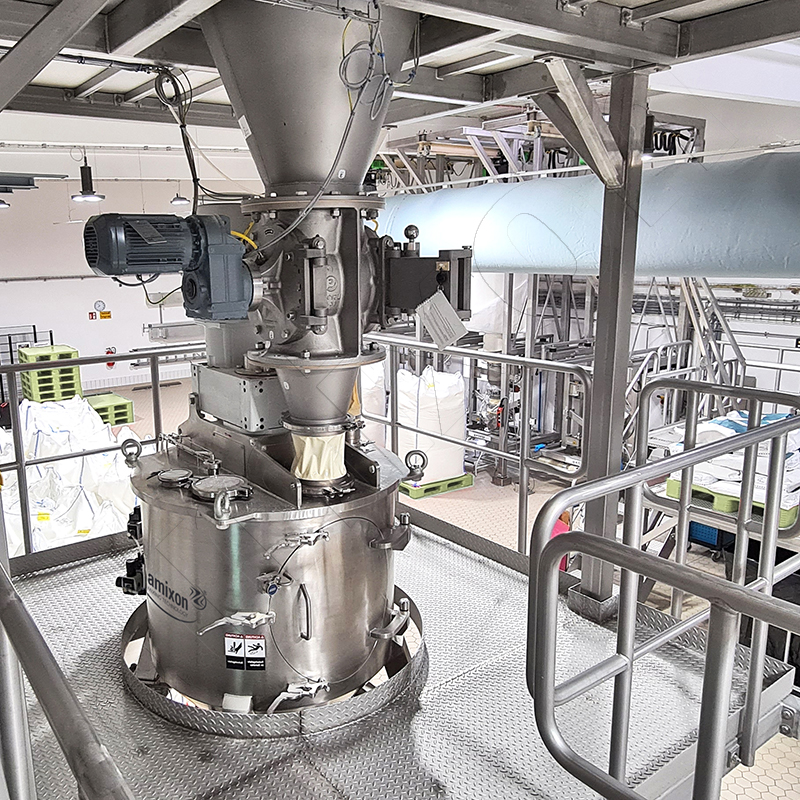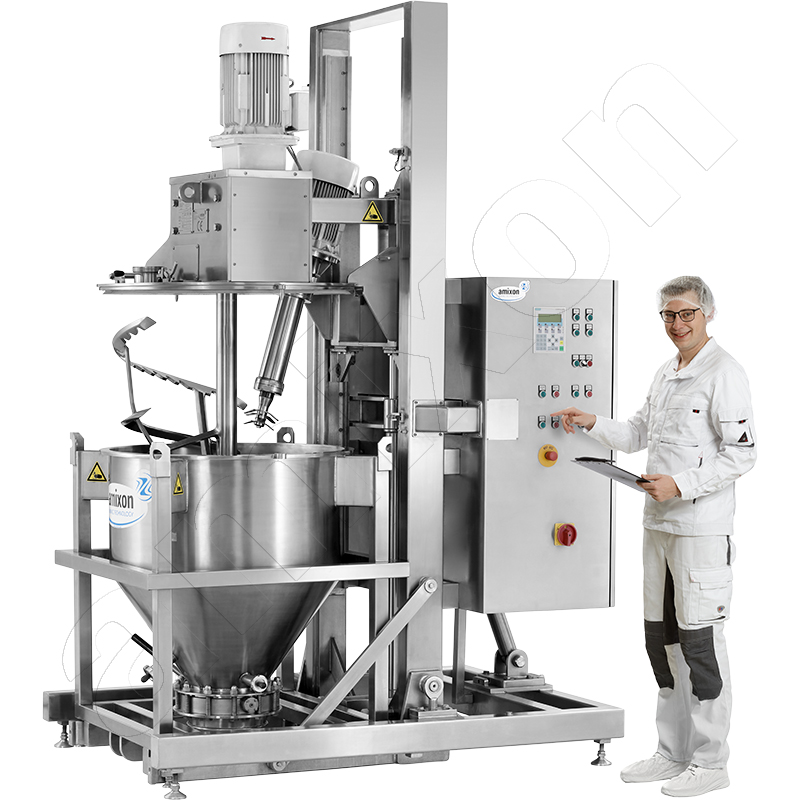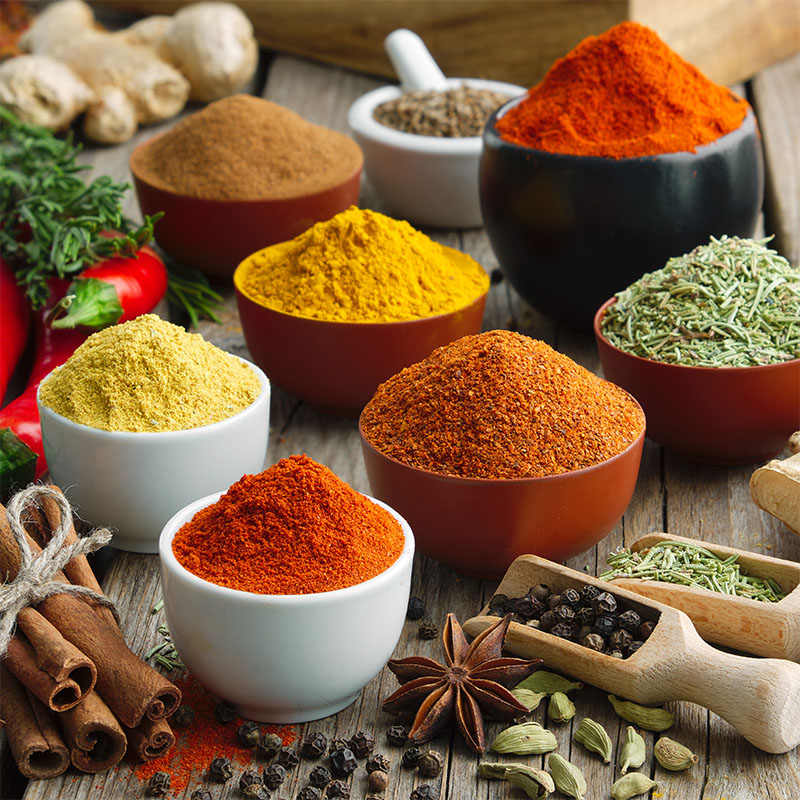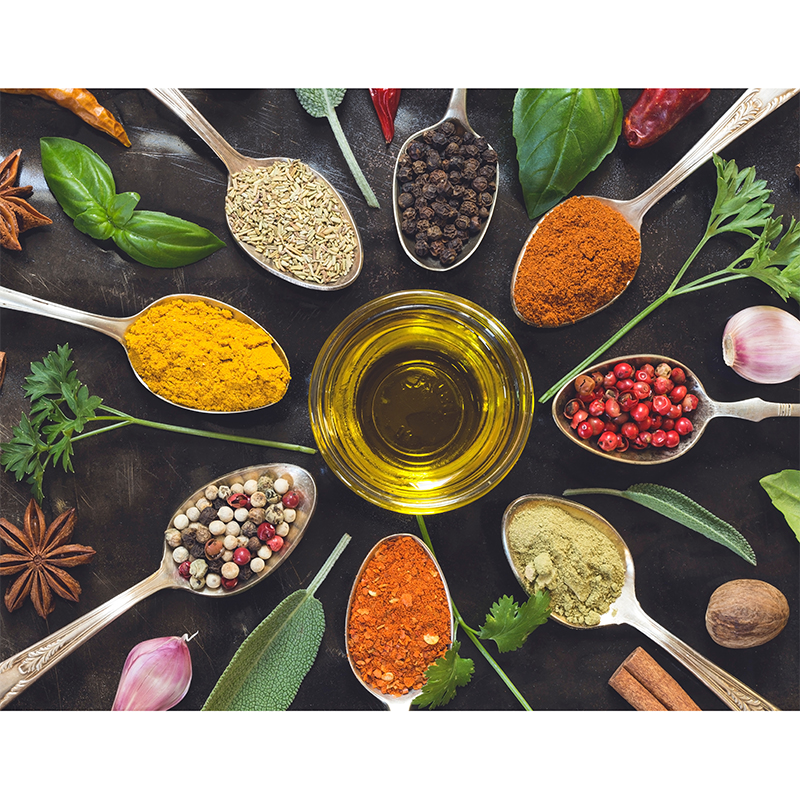Excursus - The difference between spice, spice preparation and spice mixture
Spices in the broadest sense are flowers, buds, fruits, seeds, barks, roots, rhizomes, bulbs or parts thereof, usually in dried form. Herbs are fresh or dried leaves, flowers, shoots or parts thereof.
amixon® mixer for the basic process
Mixing a wide variety of substances has been practised since the beginning of human history. Mixing is usually associated with crushing.
Crushing powdery substances increases their surface area. This means that the effectiveness is increased. The finer spices are ground, the more intense their flavour.
Mixtures of spices are often used in the preparation of food. These must be easy to sprinkle. Above all, they must have a long shelf life. Their good flavour must be retained for a long time.
This challenge places high demands on the mixer and the mixing process. amixon mixers master all the fine gradations of different mixing intensities. From gentle homogenisation to ‘aggressive’ deagglomeration. In addition, amixon mixers can be almost completely emptied. They can work with a wide range of filling levels. They have a hygienic design and are suitable for both dry and wet cleaning. They are also suitable for wet cleaning and quick drying.
amixon® mixers are all-rounders: Nevertheless, there are specialisations:
Type HM: particularly gentle and with a very short mixing time
Type AM: always mixes optimally despite widely varying filling levels
Type: SpherHelics®: study is available for trials
Type Gyraton®: mixes particularly large batches and works like a silo mixer - only much more precisely.
Type AMK: mixes continuously.
Excursus Part 1 Trends in the growth market for spices
Excursus part 3 sustainability, import and purification of spices
Please make use of the possibilities to carry out experiments in the technical center of amixon GmbH. We assure you a high gain of knowledge in advance.
Definition
Spice type | Examples |
Fruit spices | Bell pepper, vanilla, allspice, paprika, chili, black mustard, juniper, anise, star anise, cumin, coriander, sesame, sumac, dill |
Seed spice | Nutmeg, fenugreek, cardamom, mustard |
Flower spices | Cloves, saffron, capers, mace |
Root and rhizome spices | Ginger, turmeric, galangal, horseradish |
Bark spices | Cinnamon |
Leaf spices | Basil, leaf parsley, savory, tarragon, marjoram, oregano, rosemary, sage, thyme, dill, bay leaf, lemon balm, mint |
Onion spices | Garlic, onions |
In the case of mixtures of herbs and spices, a distinction is essentially made between spice mixtures and spice preparations.
- Spice blends are mixtures consisting exclusively of spices.
- Spice preparations are mixtures of one or more spices and other ingredients added for their flavor or technological effect.
In spice preparations, salt, sugar, oil, glutamate, yeast extract and starch derivatives are added for their flavor or technological effect. They often have a particularly intense flavor portfolio. Nevertheless, spice preparations contain at least 60 percent spices, but they may also contain spice flavors. When they are supplied to processing companies - for example, meat processing companies or food manufacturers - they are also referred to as spice preparations. These are available, for example, for the production of meat sausage variants with authentic taste.
Spice blend | ... is a mixture of ... |
Baharat (Orient) | Bell pepper, paprika, coriander, clove, cumin, cardamom, nutmeg, cinnamon |
Chili powder (TexMex) | Cayenne pepper, cumin, garlic, oregano |
Madras curry (India) | Turmeric, fenugreek, coriander, cumin, ginger, chili, allspice, nutmeg, cardamom and cloves |
Five spice powder (China) | Star anise, Szechuan pepper, cinnamon, fennel, cloves |
Garam Masala (India) | Cardamom, cinnamon, cloves, pepper, fenugreek, cumin |
Herbs of Provence (France) | Rosemary, basil, thyme, marjoram, oregano, tarragon, fennel, lavender, chervil, lovage |
Ras el Hanut (North Africa) | turmeric, coriander, pepper, chili, bay leaf, ginger, cloves, anise, cinnamon, nutmeg, cardamom, galangal, fenugreek, cumin |
Spice preparation | ... consists of ... |
Chinese spice | Turmeric, ginger, paprika, coriander, galangal, pepper, mace, cardamom, allspice, table salt, sugar |
Mulled wine spice | Cinnamon, cloves, allspice, cardamom, ginger, star anise, dried orange peel, sugar |
Gyros spice | salt, sweet paprika, bell pepper, onion, garlic, cane sugar, rosemary, thyme, oregano, marjoram, cumin, coriander, chili, allspice |
Gingerbread spice | Cinnamon, orange peel, lemon peel, cardamom, star anise, coriander, cloves, pepper, fennel, nutmeg, mace |
Magic Dust (Barbecue Rub) | Sweet paprika, salt, cane sugar, mustard flour, garlic, pepper, cumin, smokedjalapeño, smoked paprika, cayenne bell pepper |
Soup spice | Carrots, parsnip, leek, parsley, celery, onions, tomatoes |
Tandoori Masala (India) | Cumin, coriander, pepper, chili, cinnamon, nutmeg, sweet paprika, garlic, salt |
Zaatar (Orient) | Fennel, salt |
Many of the blends are traditionally established, but their ingredients can still vary. By taking salt out of the recipe, a spice preparation can also quickly become a spice blend again.
Factors for a functioning powder humidification in the mixing process
Why spices are healthy
The sensory experience of enjoying a well-seasoned meal is also closely linked to the health benefits of spices. Just the sight or smell of delicious food triggers pleasure and well-being in our bodies. The water literally runs in our mouths. Many spices even have an antibacterial effect and can inhibit the growth of pathogenic germs. The antibacterial property is related to the content of essential oils. Health-promoting can be anise, basil, chili, dill, fennel, cardamom, garlic, coriander, cumin, bay leaves, mace, marjoram, nutmeg, cloves, oregano, paprika, parsley, bell pepper, peppermint, allspice, rosemary, sage, celery seed, star anise, thyme, cinnamon and onion. Antioxidants are considered particularly beneficial to health and can minimize free radicals. They can also extend the shelf life of food by delaying chemical and enzymatic spoilage. Natural antioxidants are found in rosemary, sage, marjoram, oregano, thyme, cloves, pepper, allspice and mace.
Scent, taste and effect - why spices are fascinating
The fascination of spices lies in the combination of essential oils, aromas, antioxidants, colorants, vitamins and minerals. They make the pleasure a sensual experience. Some spices are believed to have health-promoting properties. Other spices have a preservative effect.
The sensual experience that spices prepare,
arises from the interaction of the senses of smell, taste and touch. Experts speak of "flavor". Through taste, we perceive only the five basic flavors of sweet, sour, salty, bitter, and umami. Only the sense of smell reveals to us the diverse aromas of the various spices. The highly volatile aromatic substances are contained in the essential oils of the spices. The sense of touch perceives the sharpness of some spices. Bell pepper, paprika, ginger, garlic and horseradish, for example, trigger heat and pain stimuli. Especially the capsaicin contained in chili, peppers and hot peppers makes us feel a kind of pain pleasure. Since the pungents stimulate blood flow to the taste buds, they also act as flavor enhancers for the basic flavors. They stimulate the appetite and improve digestion.
The journey from the producer to the consumer is long and a good "flavor" is quickly lost. Therefore, the methods of transporting, sterilizing, grinding, sieving, mixing, conveying, and filling are adapted specifically to spices.
Mixing tests in the amixon® Technical Center in Paderborn
© Copyright by amixon GmbH

